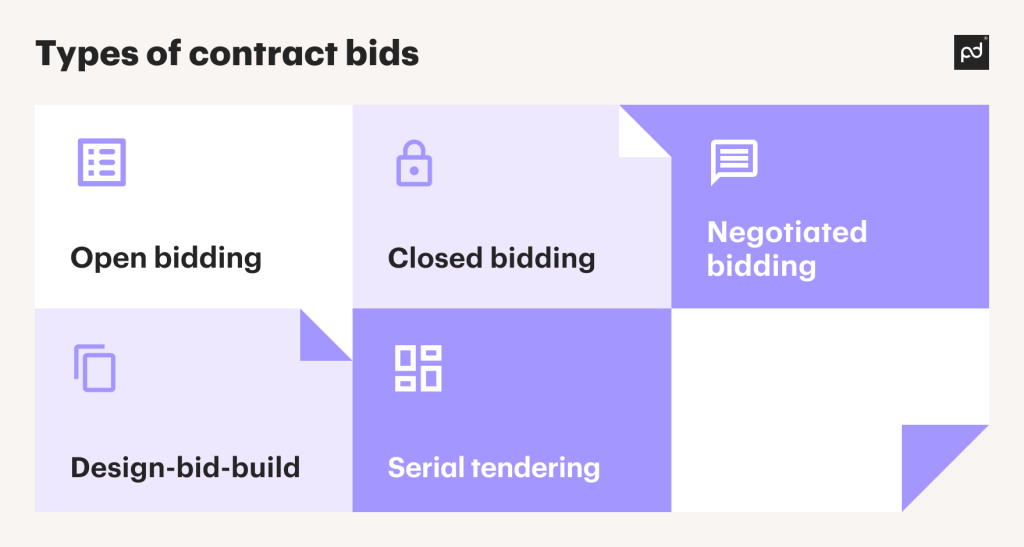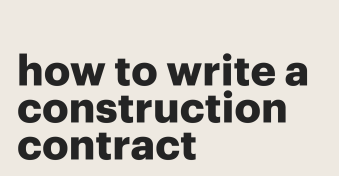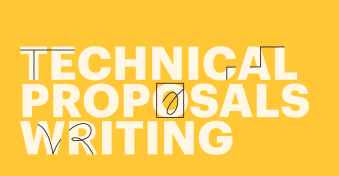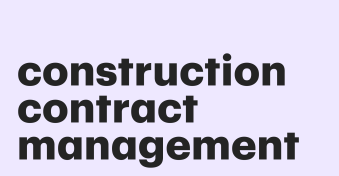Construction bidding favors only meticulous and reputable bidders.
Even with a spotless track record of timely project delivery, sometimes the best you can average is one successful bid out of 5 proposals.
So, how can contractors improve their chances of outbidding the competition?
And how can owners sift through the pile to pick the right contractor for their project?
In this article, we’ll show you how to create winning contract bids for construction. You’ll also learn some do’s and don’ts for both contractors and owners.
Key takeaways
- Bidding for a project in the construction industry involves finding the right proposal request, sending in your well-written tender, and waiting for approval.
- To land winning bids, whether it’s for government projects and private commercial construction, you need to thoroughly understand the project details and submit the correct bid documents.
- Choose the right contracting, subcontracting, and project delivery model in order to maximize profit while increasing your chances of winning the contract.
What is a construction contract bid?
A construction bid is an official application by a contractor offering their services to work on a project.
The bid proposal usually contains the breakdown of the proposed total cost, scope of work, timelines, subcontractors, risk management, permits, and licenses.
For any bid to succeed, the contractor must prove they can deliver the highest-quality work of all other applicants within the stipulated timeline.
Types of contract bids
Here are five different bidding types for construction works.

Open bidding
Every interested construction company can send in a bid for a project.
Government agencies use this type of bidding to create competition and reduce the overall cost.
They usually send out bid opportunities as a request for proposal (RFP) on open platforms like Sam.gov or GovernmentBids.com.
This is also known as competitive bidding.
Closed bidding
As the name suggests, this invitation-only bidding is limited to a specific crop of general contractors instead of the public.
Closed bidding is reserved for projects that require specialized expertise as well as discretion and/or secrecy, such as military construction projects.
Negotiated bidding
This is an even more restricted variation of the closed bidding model.
The owner negotiates directly with just one contractor.
This is common when both parties already have a working history, as well as for small projects.
Design-bid-build
Under this model, the bidders present their designs as part of the bid.
The owner now awards the contract based on the bid’s accuracy and favorability.
Serial tendering
This type of bid involves breaking the project into series or stages and having a running tender for each one.
At the start of the new series, you open up to new offers, keeping current contractors on their toes and pricing competitive.
This works for long-term development projects.
How to make successful contract bids
Here are the steps to follow to improve your odds of landing lucrative contracts.
1. Solicitation
During the solicitation stage, the client — a government agency or real estate developer — requests procurement tenders from interested construction companies.
The solicitation platform usually specifies construction specs, contract types, requirements, expectations, and delivery methods.
In some cases, the soliciting entity would add professional licenses, permits, subcontractors, and drawings to the prequalification requirements.
Contractors can bid for public projects on government websites.
For private projects, the client could accept and process bids on a private solicitation website or send an invitation for proposal (IFP) to handpicked agencies.
2. Submission
Bid submission involves sending in your tender (proposal) for consideration before the final bid date.
You can download a generic construction proposal template for private projects with non-government entities.
However, when bidding for government contracts, you need to know the local bidding laws before submitting your proposal.
For example, the solicitation documents you’re required to submit in New York City differ from those needed for Texas-based projects.
The contents of any bid include the following:
- Scope of work and detailed bill of quantities
- Executive summary and project description
- Proposed project timeline and schedules (start and end dates)
- Accurate estimate (labor, materials, overhead, equipment, logistics)
- General contractor’s information (full name, address, and contact information)
If the client requests information about subcontractors, you should also include it in the documents you submit before the deadline.
3. Evaluation and selection
At the end of the construction bidding process, the client starts evaluating all applications to choose a winner.
Here are some key considerations:
- Who has the lowest bid?
- Who has the best design?
- Who has the best safety record?
- Who has all the necessary permits?
- Which bid is the most detailed and convincing?
- Who has a proven track record in this type of work?
These days, clients use automated bid evaluators to score proposals based on these metrics. Then, they’ll select the top performers for one-on-one interviews.
If you make it to the next stage, you can now use your charm and expertise to win over the project owner.
4. Negotiation and award
If the project owner accepts your bid, the negotiation process will be a formality.
They already know what you can offer, and you are in alignment about expectations, values, and timelines.
But some details of the contract might still need ironing out.
One example is the type of construction contract to choose.
This is usually part of the bid, but the owner could opt for a different type of agreement during negotiations.
Here are your options:
- Unit pricing: The owner pays the contractor for every unit of work.
- Design-build: A single vendor is in charge of designing and building the entire project.
- Guaranteed maximum price (GMP): The owner provides a capped price for the entire project.
- Fixed price (lump sum): The owner gives the contractor a lump sum with a profit markup.
- Cost-plus: The client compensates the contractor for all construction-related expenses in addition to a specific profit markup.
- Incentive: the owner adds incentives and rewards if the contractor meets pre-set milestones.
- Integrated project delivery: The contract binds multiple entities, including the owner, contractor, and designer.
- Time and materials: The owner and builder agree on the contractor’s profit percentage, as well as total reimbursement for materials and billable hours.
If all parties agree on the contract, the deal is sealed in a legally binding AIA-approved document.
5. Construction delivery
Delivery covers everything that happens from the start date until the actual completion date.
It includes the actual construction, inspections, dispute resolution if needed, scope updates, and post-construction cleaning.
Here are the four standard delivery models:
- Design-Bid-Build (DBB): This traditional method separates the design and construction processes. First, the project owner hires an architect or engineer to design the project. Then, the completed design is bid on by contractors.
- Design-Build (DB): A single entity (the design-build team) is responsible for both designing and constructing a project.
- Construction Management at Risk (CMAR): A construction manager or supervisor handles the administrative responsibility on-site to deliver milestones, keep expenses in check, and manage risks.
- Integrated project delivery (IPD): The owner, designer, and general contractor share responsibilities, risks, and rewards.
- Multi-Prime (MP): A DBB variation for owners working with multiple contractors simultaneously.
What are the tips for getting the best construction bids?
The best win rate (bid-hit ratio) for construction bids is 20% (5 to 1). For smaller construction companies, the rate can be as low as 5% (20 to 1).
Here are some best practices to keep your bid-hit ratio as high as possible.
- Choose the right contract type for your project.
- Submit your bid early to show your dedication timelines.
- Add only industry-relevant references to your application.
- Outline your project costs using a detailed bill of quantities.
- Don’t bid on everything. Only bid on projects you can deliver.
- Use recommended bid templates for local and federal projects.
- Watch out for open bids on private and public bidding platforms.
- Make sure the final bid package has all the required documents.
- Place a lower limit on your pricing. Don’t go so low that you slice into your profits.
- Follow the project details to a T. Ask for clarification if something is unclear.
For project owners, here are some tips to land the best candidate for construction jobs.
- Evaluate subcontractors separately.
- Don’t hire contractors who don’t ask questions.
- Narrow down the solicitation pool with closed bidding.
- Carry out a follow-up interview before finalizing a contract.
- Check the contractor’s safety records and relevant experience.
- Look for red flags, such as unrealistic timelines and incorrect documentation.
- Don’t rush to accept the first few low bids, and don’t choose the bid with the lowest price.
How PandaDoc can help you make winning bids
If you want a contract management system that can help you draft bids, proposals, and construction contracts, PandaDoc is the best option for you.
This platform speeds up solicitation and negotiations by providing construction contract templates with boilerplate clauses and other customizable provisions.
All stakeholders can also use our eSignature solution to sign and date contracts.
And if you want safe storage for all the proposal, solicitation, and negotiation documents, you can store them on the online repository.
To find out how PandaDoc works for contractors and owners, book a demo or start a free trial right away.
Disclaimer
PandaDoc is not a law firm, or a substitute for an attorney or law firm. This page is not intended to and does not provide legal advice. Should you have legal questions on the validity of e-signatures or digital signatures and the enforceability thereof, please consult with an attorney or law firm. Use of PandaDoc services are governed by our Terms of Use and Privacy Policy.


